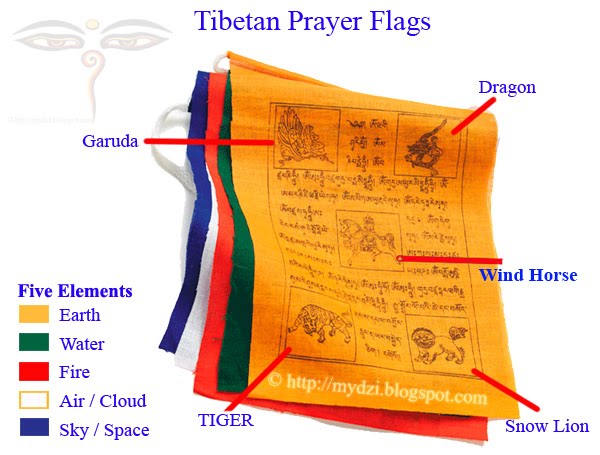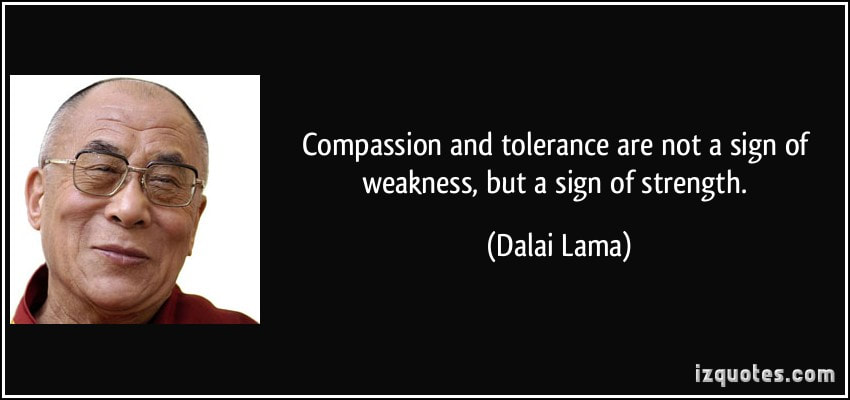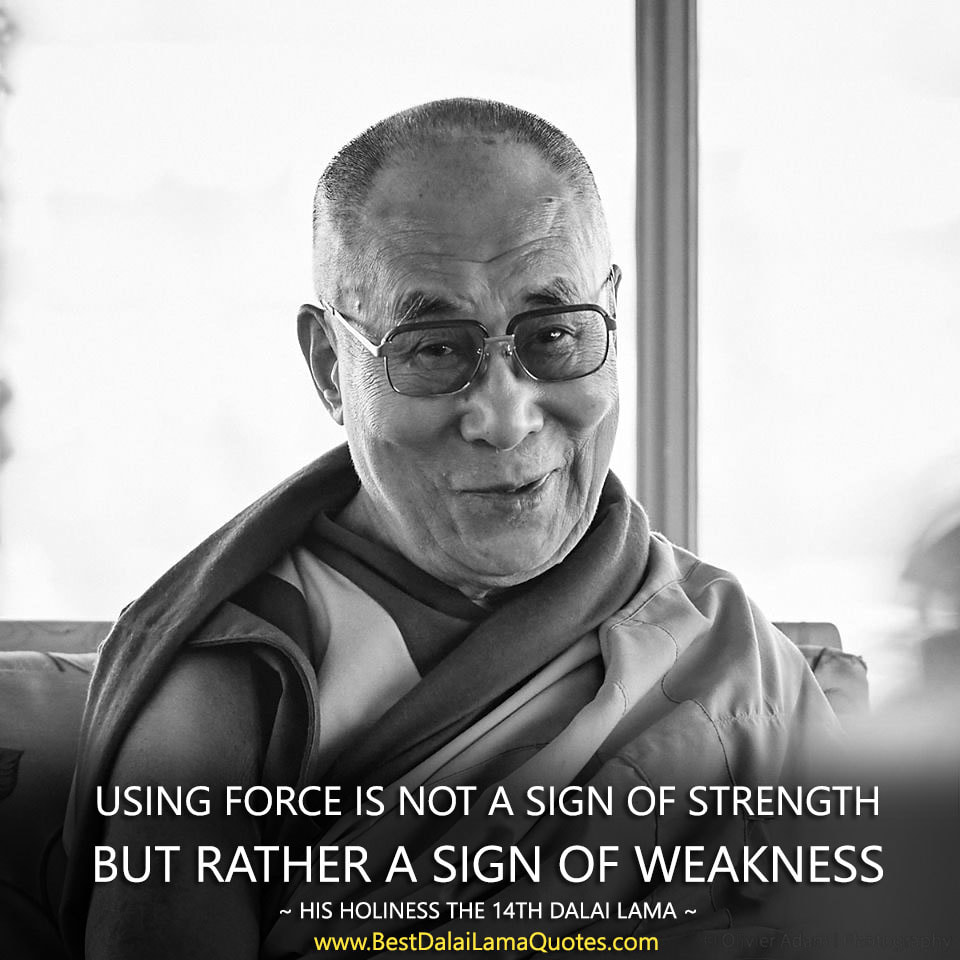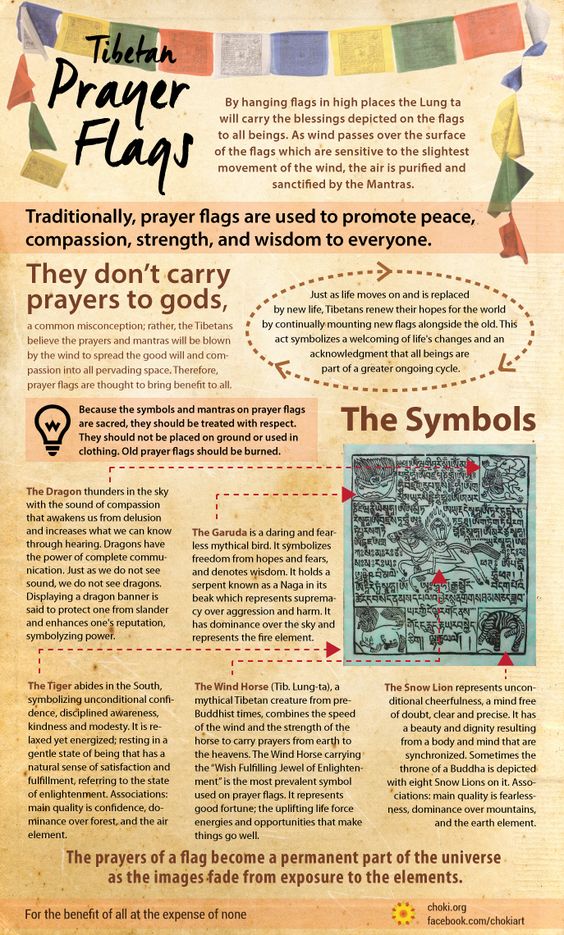Tibetan Prayer FLags/Wishing Banner
|
Prayer flags have become quite popular in recent years. Even non-Buddhist children and teens may have seen these colorful printed flags hung between trees, blowing in the wind. But do they (or even Buddhist adults) really know what they are? Probably not. What better way to learn about this Buddhist tradition than to make some together and talk about their meaning as you go? Here, we are providing a simple tutorial and some background information. Making prayer flags with children and teens is auspicious fun and relatively easy to accomplish. Enjoy!
|
Himalayan art scholar Jeff Watt writes that “a prayer flag is a printed image on paper or cloth intended to be thrown into the wind or fixed wherever the wind blows. The flags often contain images of animals, deities, or auspicious (favorable) inscriptions.” Commonly the central animal on prayer flags is a horse and Watt explains that “traditionally, it’s thought that it is the horse that rides the wind and carries the auspicious wishes and prayers to the world.” The Wind Horse (or lung ta) is also associated with “spirit” in a general sense. Prayer flags are hung often to lift the spirit of beings in the environment where they are raised.
There are five colors of prayer flags (blue, white, red, green and yellow) and they come in sets of five. The five colors represent the elements as they are categorized in Tibetan Buddhism: blue symbolizes space; white symbolizes air; red symbolizes fire; green symbolizes water; and yellow symbolizes earth. The balance of these elements is believed to be crucial.
In addition to the Wind Horse there are 4 other animals which can be recognized with the help of the diagram to the left. These are the Sky Dragon, Eagle/Garuda, Snow Lion and Tiger and are known collectively as “The Four Dignities (a high or honorable rank).” These powerful animals represent the 4 cardinal directions. Spiritually, they also represent qualities that the Bodhisattva develops on the path the to enlightenment.
Tibetan prayers and mantras are written on the flags. It is believed that by hanging flags in high places the lung ta will carry the blessings depicted on the flags to all beings.
Because the symbols and mantras on prayer flags are sacred, they should be treated with respect. They should not be placed on the ground or used on clothing. Old prayer flags should be burned.
There are five colors of prayer flags (blue, white, red, green and yellow) and they come in sets of five. The five colors represent the elements as they are categorized in Tibetan Buddhism: blue symbolizes space; white symbolizes air; red symbolizes fire; green symbolizes water; and yellow symbolizes earth. The balance of these elements is believed to be crucial.
In addition to the Wind Horse there are 4 other animals which can be recognized with the help of the diagram to the left. These are the Sky Dragon, Eagle/Garuda, Snow Lion and Tiger and are known collectively as “The Four Dignities (a high or honorable rank).” These powerful animals represent the 4 cardinal directions. Spiritually, they also represent qualities that the Bodhisattva develops on the path the to enlightenment.
Tibetan prayers and mantras are written on the flags. It is believed that by hanging flags in high places the lung ta will carry the blessings depicted on the flags to all beings.
Because the symbols and mantras on prayer flags are sacred, they should be treated with respect. They should not be placed on the ground or used on clothing. Old prayer flags should be burned.
Parts from Compassion and the Individual
by Dalai Lama
Of course, developing this kind of compassion is not at all easy! As a start, let us consider the following facts:
Whether people are beautiful and friendly or unattractive and disruptive, ultimately they are human beings, just like oneself. Like oneself, they want happiness and do not want suffering. Furthermore, their right to overcome suffering and be happy is equal to one's own. Now, when you recognize that all beings are equal in both their desire for happiness and their right to obtain it, you automatically feel empathy and closeness for them. Through accustoming your mind to this sense of universal altruism, you develop a feeling of responsibility for others: the wish to help them actively overcome their problems. Nor is this wish selective; it applies equally to all. As long as they are human beings experiencing pleasure and pain just as you do, there is no logical basis to discriminate between them or to alter your concern for them if they behave negatively.
Let me emphasize that it is within your power, given patience and time, to develop this kind of compassion. Of course, our self-centeredness, our distinctive attachment to the feeling of an independent, self-existent �I�, works fundamentally to inhibit our compassion. Indeed, true compassion can be experienced only when this type of self- grasping is eliminated. But this does not mean that we cannot start and make progress now.
How can we start
We should begin by removing the greatest hindrances to compassion: anger and hatred. As we all know, these are extremely powerful emotions and they can overwhelm our entire mind. Nevertheless, they can be controlled. If, however, they are not, these negative emotions will plague us - with no extra effort on their part! - and impede our quest for the happiness of a loving mind.
Friends and enemiesSo anger and hatred are always harmful, and unless we train our minds and work to reduce their negative force, they will continue to disturb us and disrupt our attempts to develop a calm mind. Anger and hatred are our real enemies. These are the forces we most need to confront and defeat, not the temporary enemies who appear intermittently throughout life.
Whether people are beautiful and friendly or unattractive and disruptive, ultimately they are human beings, just like oneself. Like oneself, they want happiness and do not want suffering. Furthermore, their right to overcome suffering and be happy is equal to one's own. Now, when you recognize that all beings are equal in both their desire for happiness and their right to obtain it, you automatically feel empathy and closeness for them. Through accustoming your mind to this sense of universal altruism, you develop a feeling of responsibility for others: the wish to help them actively overcome their problems. Nor is this wish selective; it applies equally to all. As long as they are human beings experiencing pleasure and pain just as you do, there is no logical basis to discriminate between them or to alter your concern for them if they behave negatively.
Let me emphasize that it is within your power, given patience and time, to develop this kind of compassion. Of course, our self-centeredness, our distinctive attachment to the feeling of an independent, self-existent �I�, works fundamentally to inhibit our compassion. Indeed, true compassion can be experienced only when this type of self- grasping is eliminated. But this does not mean that we cannot start and make progress now.
How can we start
We should begin by removing the greatest hindrances to compassion: anger and hatred. As we all know, these are extremely powerful emotions and they can overwhelm our entire mind. Nevertheless, they can be controlled. If, however, they are not, these negative emotions will plague us - with no extra effort on their part! - and impede our quest for the happiness of a loving mind.
Friends and enemiesSo anger and hatred are always harmful, and unless we train our minds and work to reduce their negative force, they will continue to disturb us and disrupt our attempts to develop a calm mind. Anger and hatred are our real enemies. These are the forces we most need to confront and defeat, not the temporary enemies who appear intermittently throughout life.
Start video at 15:20
|
|
|
|
Each Flag must include
- Specified background color
- wind horse, icon or symbol
- At least one word or phrase showing compassion for others
- A wish for self for the upcoming school year
- Four animals that represent qualities that are important for students in this school to have.





